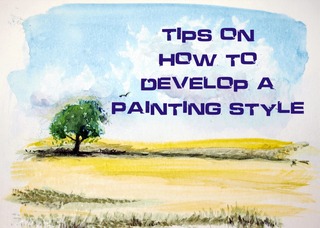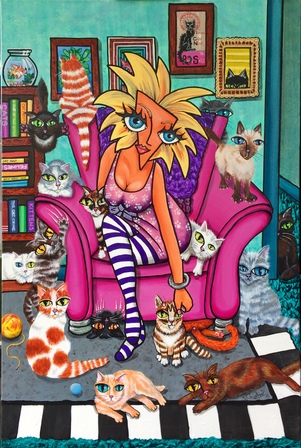Crafting Your Artistic Voice: Nurturing a Unique Style
Part of being an artist has your own identifiable style; you know that special 'something' means when someone looks at a painting and instantly knows that it's by you, regardless of the subject of the painting.
Galleries like to see a particular painting style in their work rather than a mish-mash of conflicting styles, so they often try to push you into staying with that style even when you feel you have outgrown it. This happens because the gallery has created a market for that particular thing, and its customers want to see more of it.
Now it is possible to paint what you like, but if your goal is to make a living out of your art, then you'll have to strike the right balance with what you want to do against what others want you to do. After all, art is a business just like any other, so you must provide a product people want to buy. Then, when your fan base or customer base is large enough or wealthy enough, you can paint more or less what you choose to because you'll have created a demand.
So how do you develop your own style, or is it something that automatically happens? And do you have to stick with that style forever, or can you change it?
For me, it just seemed to happen. Although I thought my work was one extreme to the other, people would tell me they could tell my work instantly, so I was lucky that it just seemed to develop unconsciously over time. Being largely self-taught has enabled me to develop this, as there has not been any opportunity for others to influence my style. A good teacher will help you with this rather than expect you to follow their style as some do.
Maintaining your style doesn't mean sticking to the same subject matter or colours. However, for some artists, that can be their only point of difference. Style is something else altogether. Unusual paint strokes, heavy thick, impasto paint or fine, fine detail, impressionistic clouds, people with strangely long necks, or permanently using red as an underpainting can be part of your style, for example. Take a look at all your work and see what elements are the same. You can learn a lot about yourself and your style by studying the works of other artists and art in general. I was surprised to find when I traced Picasso's Guernica for a work project that a lot of his subtle background things lined up throughout his painting, this was something I was pedantic about with my abstract work, yet I wasn't fully aware that it was part of my style until then.
The best way to develop a style is to do a lot of painting. You will suddenly notice that specific themes will occur over and over again, whether it's your favourite colours or how you line things up as I do; it will start to stand out to you as it begins creeping into your work more and more. It is essential, however, that you do not copy other artists' work. After all, it doesn't help you with your development (except maybe in the beginning stages of learning to paint.). On the other hand, life is too short not to be original!
Please take a look at my Art Blog for other articles
like how to price your artwork - Pricing Your Artwork: Finding Value in Creativity
Or how about - How Signing Your Artwork adds Value and Authenticity
Posted: Saturday 6 February 2010



